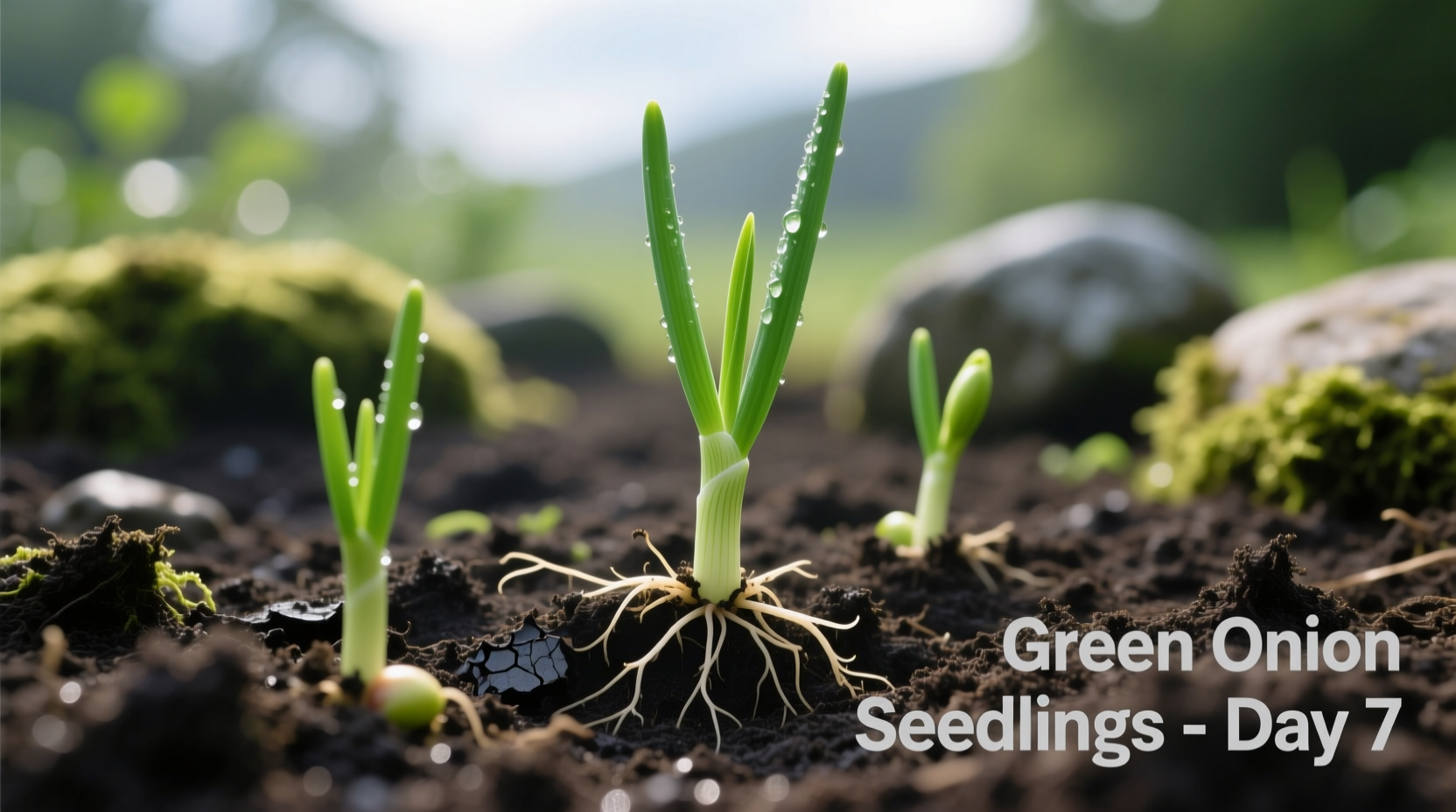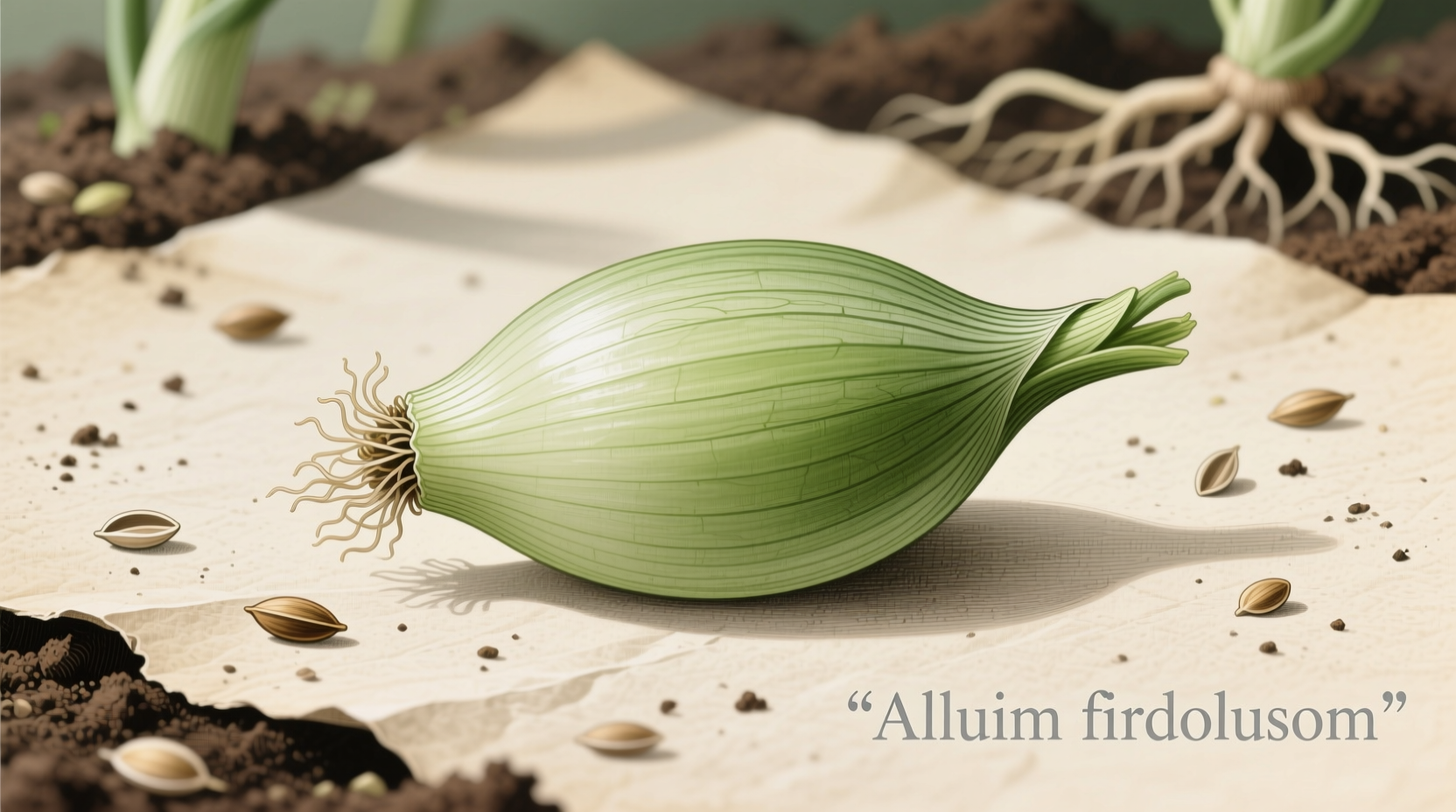Discover exactly how to grow crisp, flavorful green onions from seed with this comprehensive guide. Whether you're a beginner gardener or looking to perfect your technique, you'll learn the optimal planting schedule, soil requirements, and harvesting methods that yield restaurant-quality green onions year-round.
Understanding Green Onion Seeds: What You're Actually Planting
Green onion seeds come from Allium fistulosum, a different species than common bulb onions (Allium cepa). This distinction matters because green onion seeds produce plants that never form bulbs, instead growing long, hollow green stalks with small white bases ideal for culinary use.
| Planting Method | Germination Time | Harvest Time | Best For |
|---|---|---|---|
| Green onion seeds | 7-14 days | 60-80 days | Continuous harvest, cost-effective |
| Onion sets | N/A | 30-45 days | Quick results, beginner-friendly |
| Transplants | N/A | 45-60 days | Head start in short seasons |
According to the USDA Agricultural Research Service, green onion seeds maintain viability for 1-2 years when stored properly in cool, dry conditions—significantly shorter than bulb onion seeds which can remain viable for 3-4 years (USDA ARS, 2023). This explains why many gardeners report poor germination with older green onion seed packets.
Optimal Planting Timeline for Maximum Yield
Green onions thrive in cool weather, making them perfect for both spring and fall planting. The University of California Cooperative Extension recommends planting green onion seeds 2-4 weeks before your last expected frost date for spring harvest, and 8-10 weeks before first frost for fall harvest (UCCE, 2024).
For continuous harvest throughout the growing season, implement succession planting every 2-3 weeks. This technique, documented in Cornell University's gardening resources, ensures you always have mature plants ready for harvest while new seeds are germinating (Cornell Gardening, 2023).

Step-by-Step Planting Process
Soil Preparation (1 Week Before Planting)
Green onions prefer slightly acidic to neutral soil (pH 6.0-7.0) with excellent drainage. Amend your garden bed with 2-3 inches of compost worked into the top 6 inches of soil. Avoid fresh manure which can cause excessive leaf growth at the expense of flavor development.
Planting Your Seeds (The Critical First Step)
Plant seeds ¼ inch deep in rows spaced 12-18 inches apart. For container gardening, use pots at least 6 inches deep with drainage holes. Space seeds ½ inch apart initially, then thin to 1-2 inches apart once seedlings reach 2 inches tall. Overcrowding is the most common mistake that leads to stunted growth.
Watering Requirements (The Germination Phase)
Maintain consistent soil moisture during germination—dry soil prevents sprouting while waterlogged conditions cause seed rot. Use a spray bottle for gentle watering until seedlings emerge. After establishment, provide 1 inch of water weekly, increasing during hot, dry periods.
Essential Care for Healthy Green Onions
Fertilizing Schedule
Green onions benefit from nitrogen-rich fertilizer applied 3-4 weeks after planting. The University of Minnesota Extension recommends a balanced 10-10-10 fertilizer at half-strength every 3-4 weeks for container plants, or blood meal (12-0-0) for garden beds (UMN Extension, 2023).
Pest Management
Thrips and onion maggots pose the greatest threat to green onions. Prevent infestations by rotating crops annually and using floating row covers. If pests appear, a solution of 1 tablespoon mild soap per quart of water applied to affected plants provides effective organic control.
Harvesting Techniques for Continuous Production
Harvest green onions when they reach pencil thickness (about ¼ inch in diameter). Use the "cut-and-come-again" method: cut 1-2 inches above the soil line, leaving the roots intact. This allows regrowth for 3-4 additional harvests before replanting.
For the sweetest flavor, harvest in the morning after dew has dried but before midday heat. Store harvested green onions in a jar with ½ inch of water in the refrigerator for up to 2 weeks, changing water every 3 days.
Troubleshooting Common Growing Problems
Poor Germination Rates
If fewer than 50% of seeds sprout, check these factors:
- Soil temperature below 40°F or above 85°F
- Seeds planted deeper than ½ inch
- Old seeds (green onion seeds lose viability faster than bulb onions)
- Inconsistent moisture during germination
Yellowing Leaves
Yellow tips indicate either nitrogen deficiency or overwatering. Apply a light nitrogen fertilizer and reduce watering frequency. Complete yellowing suggests root rot from poor drainage—improve soil structure with additional compost.
Maximizing Your Green Onion Harvest
For year-round supply, plant in succession every 2-3 weeks throughout the growing season. In colder climates, use cold frames or row covers to extend the season. During summer's heat, provide afternoon shade to prevent bolting. In containers, move pots to shadier locations when temperatures exceed 85°F.











 浙公网安备
33010002000092号
浙公网安备
33010002000092号 浙B2-20120091-4
浙B2-20120091-4